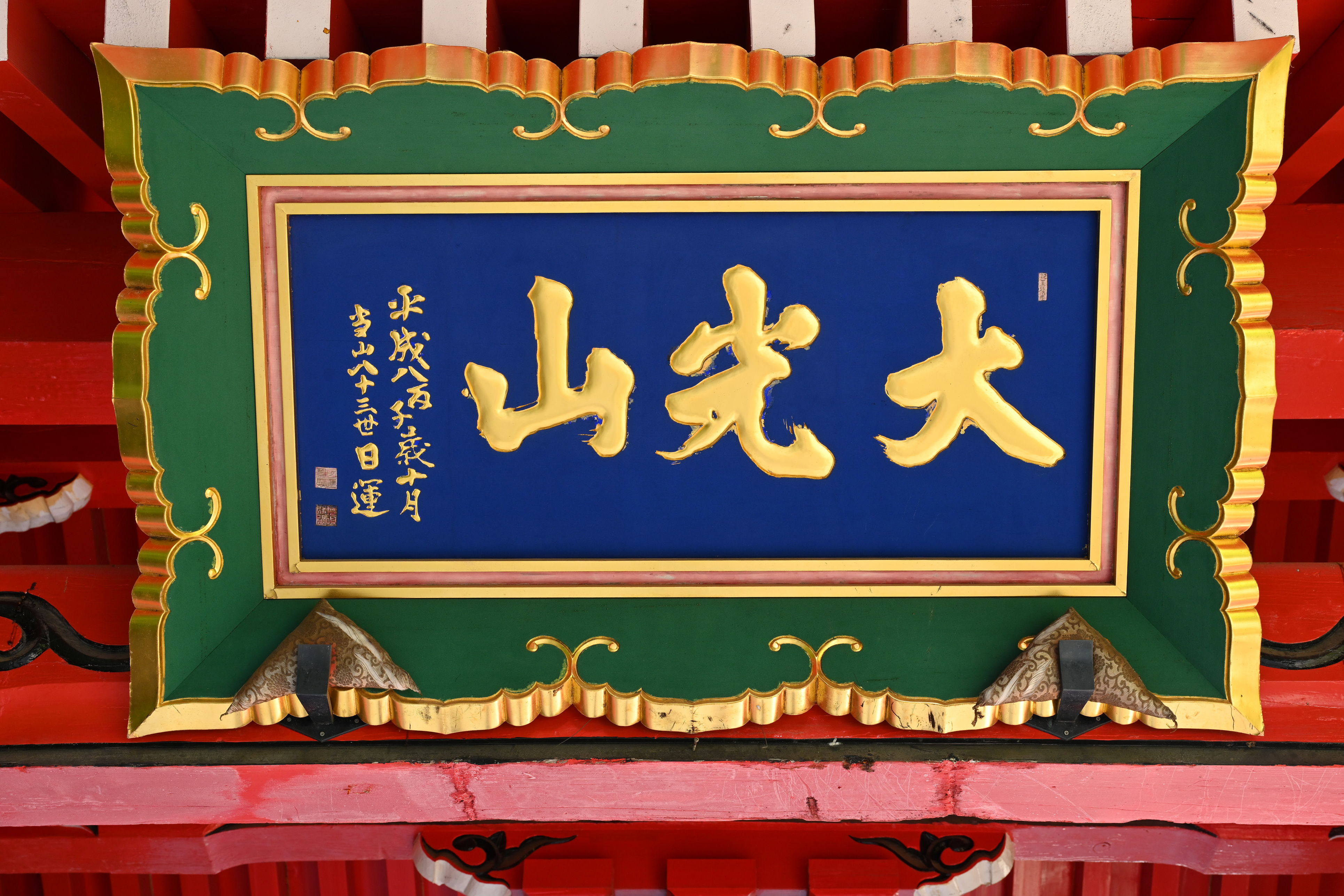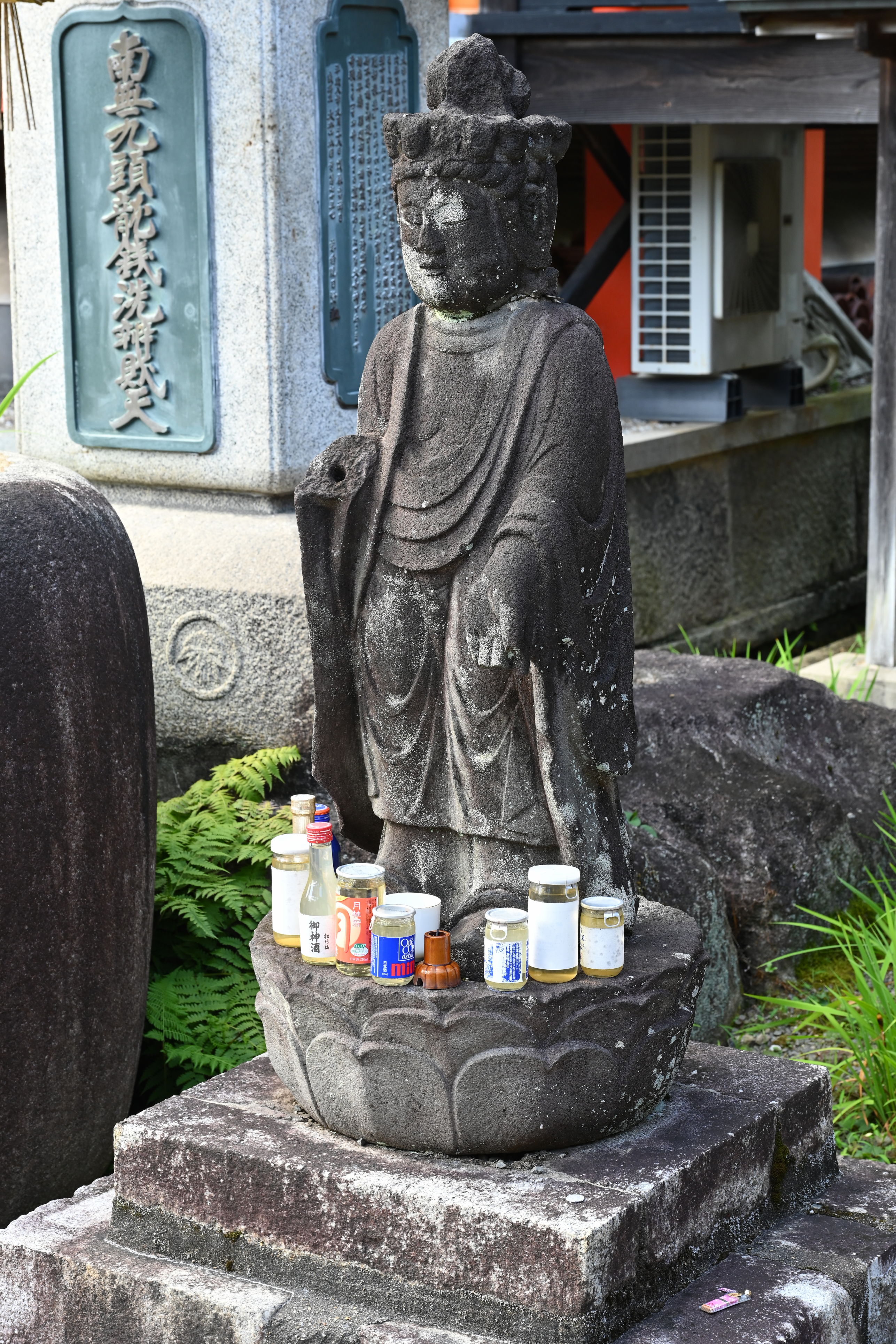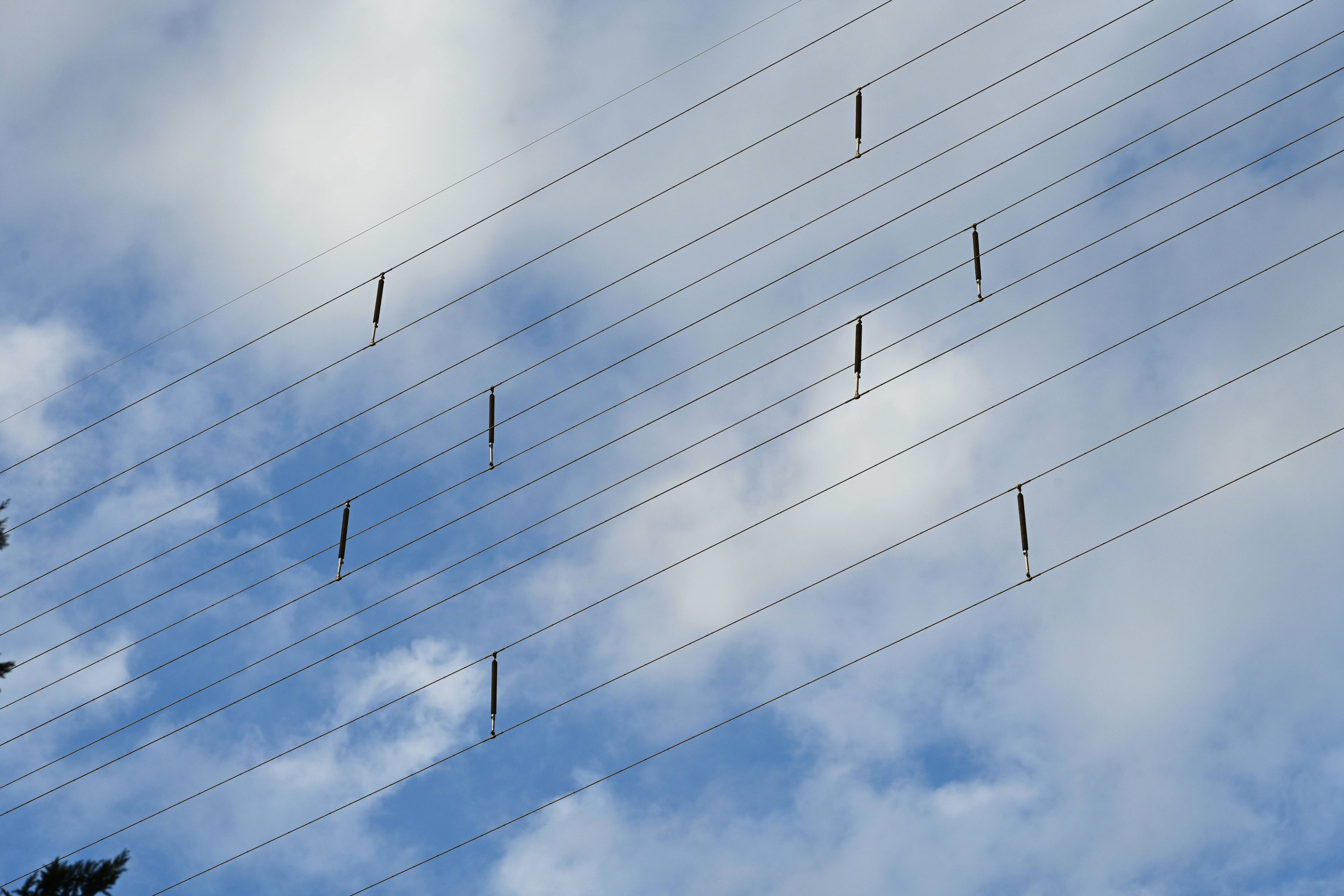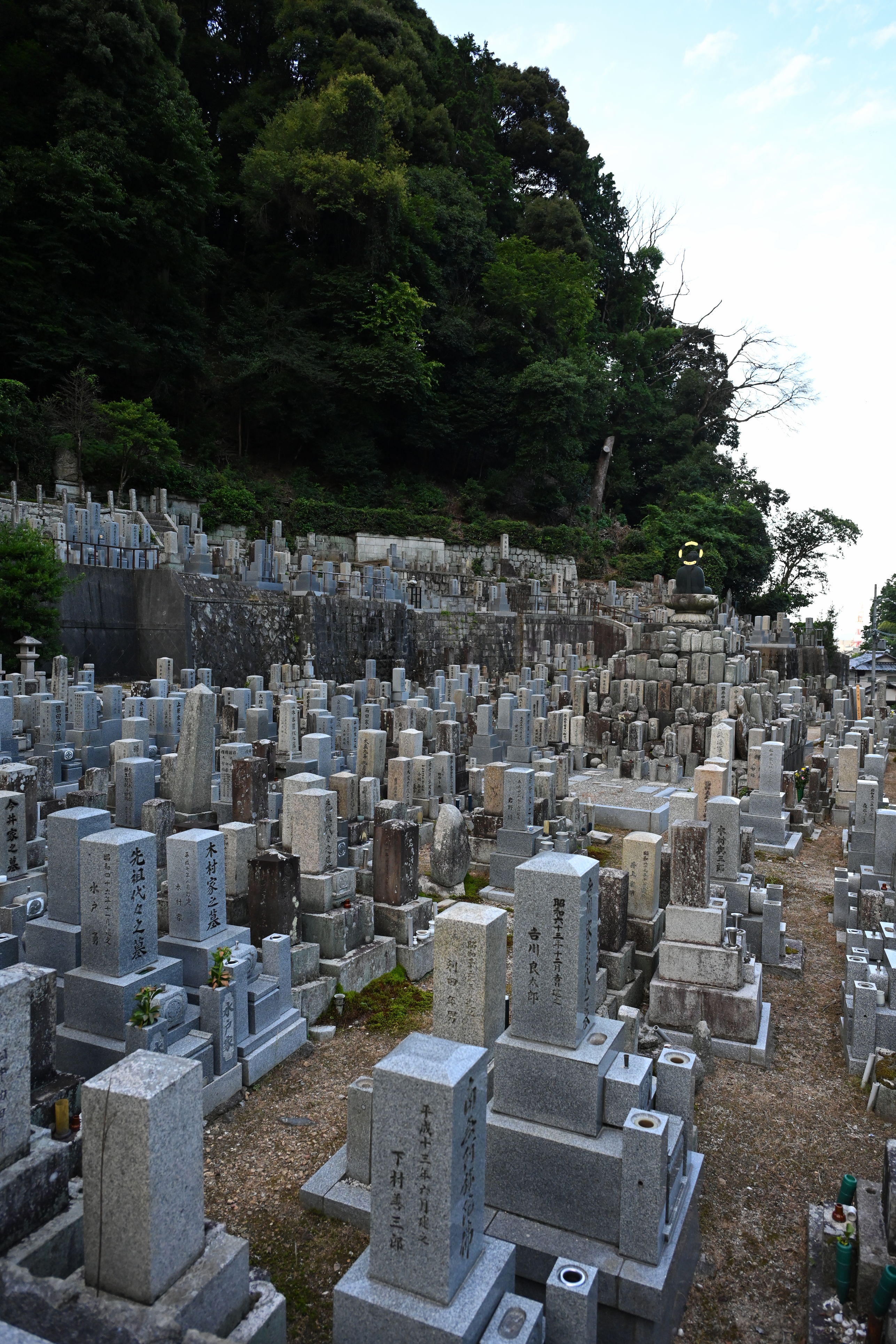A walk from Kyoto to Lake Biwa
Yesterday was an adventure of several cities including Nara and Uji. Today we planned to check out Nanzenji and area temples, but it turned into a different kind of adventure, as we trekked from Kyoto to the neighboring Shiga Prefecture and Lake Biwa mostly by foot.
A meta aside
I keep thinking the next entry is going to be short and sweet, but then when I go to narrow down the photos, I still end up with a ton. In this case I’m down to 76 photos for this blog. The sweet spot for me is around when I get too tired to write different captions for each photo. I probably should shift to more of a tiled gallery style of showing large batches of photos here, but everything is hard. If nothing else, this reinforces just how busy we were for this Japan trip, seeing so many things I could barely keep up even in the moment. It’s a miracle I’m getting my blogs for the trip written less than 6 weeks later!
First, checking out of hotel
We woke pretty late at 09:00 considering we had to check out today. But Patton’s fancy status got us late checkout at 13:00. Patton hit the gym and did some of our laundry in the hotel’s two coin operated machines while Chakib and I got breakfast.
Unfortunately the laundry was still very wet after I put it in for two extra 30 minute drying sessions, and we were running out of time. I forgot how different Japanese clothes dryers are than American ones. We packed some of the wet clothes into our luggage and tried to dry some with the hair drier. None of that worked out very well, and we left at the last minute at 13:00.
Nanzen-ji, Kyoto
Then we headed to the Zen Buddhist temple Nanzen-ji. We took the Karasuma Line from Kyoto Station to Karasuma Oike Station, then Tozai Line to Keage Station. Chakib pointed out the “ji” in the name means the place is a temple, and similarly “sha” or “ja” signifies a shrine. There’s a lot more to this, but I found some great summaries on Reddit at How to make the difference between temple and shrine architecture : r/JapanTravel and How to make the difference between temple and shrine names : r/JapanTravel, such as this:
Temples names finish by in 院, ji/dera 寺 or dō 堂.
Most shrines names finish by jinja 神社, taisha 大社, jingu 神宮 and gu 宮, but can also finish by ōyashiro 大社, miya 宮, daigongen 大権現, myojin 明神, daimyojin 大明神/大神, ōkami/daijin 大神, sha/ja/yashiro 社 or daijingu 大神宮.

Most escalators in Japan are two people wide, with one side designated for standing and the other left open for walkers, which is convenient for me usually. Note the side that is for walking depends on the region, with the right for walkers in Tokyo and Nagoya and the left in Osaka. Once in a while you find an escalator that explicitly says you cannot walk on it. This seemed more common in Kyoto.

I loved how the ditches on the sides of the street here were almost like manicured rock gardens. Walking up the road from Keage Station in Kyoto to the Zen Buddhist temple Nanzen-Ji.

The Nanzenji Sammon Gate, or mountain gate, at the entrance to the complex. The wood columns here are massive.
Lake Biwa Canal
Anyway, we did not quite make it inside the Nanzen-ji grounds, because we kind of accidentally took a path to the south that led to a hydro power station called 蹴上発電所取水口.

We ended up getting sidetracked, and instead of going to the Nanzenji temple itself, we took a trail south and ended up at a hydro power station called 蹴上発電所取水口. From there we decided to continue following the canal all the way to Lake Biwa about 10 kilometers to the east.

Some of the flora and fauna near the hydro power station called 蹴上発電所取水口 just south of Nanzenji in Kyoto, Japan.
At that point we decided to take a 12 km trail to Lake Biwa on the biwako sosui trail or Lake Biwa Canal. Our alternative would have been going back up to Nanzen-ji and north to other famous places like the philosopher’s path. We opted for a more scenic, less touristy route instead and headed to Lake Biwa.
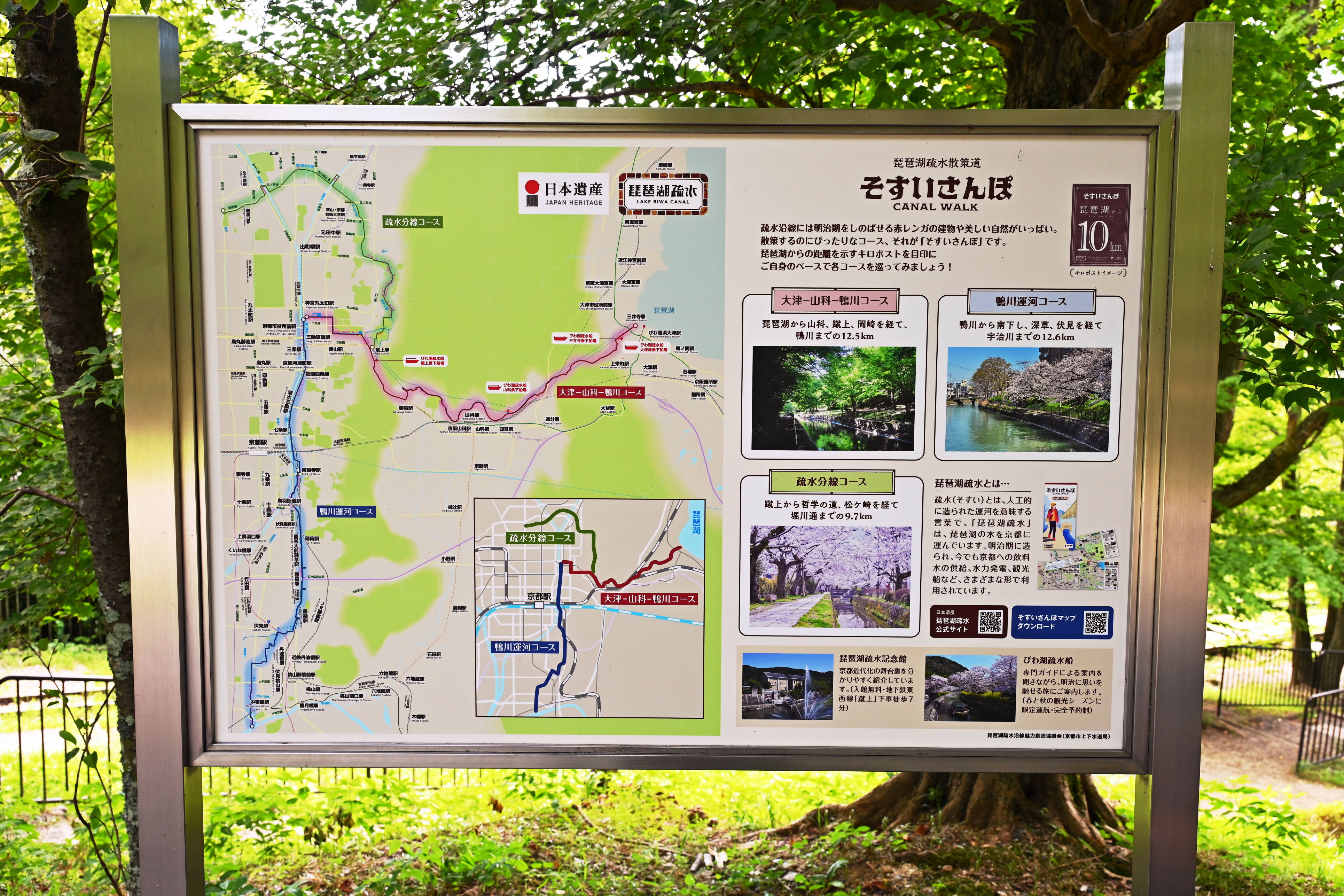
Map illustrating the three different options for long walks along canals in Kyoto. While these are surely more beautiful in cherry blossom season, our route to Lake Biwa was still very nice in July.
We initially walked on some small town streets, as we apparently lost the trail before it even started. But we circled back up to what looked like the start of the canal on the map. As usual I got distracted by garbage. In Kyoto, yellow garbage bags are for general burnable waste, but these appear to be full of organic clippings. I guess they don’t compost here, and instead send this stuff to an incinerator? Very strange.

Organic waste in yellow bags for collection near Keage Station in Kyoto, Japan. I think the yellow bags are for general burnable trash, so this is not going to be composted sadly.

I'm not sure if this is to prevent animals getting into the trash or what, but some yellow burnable garbage bags were kept inside a metal cage covered in a blue netting near Keage Station in Kyoto, Japan.
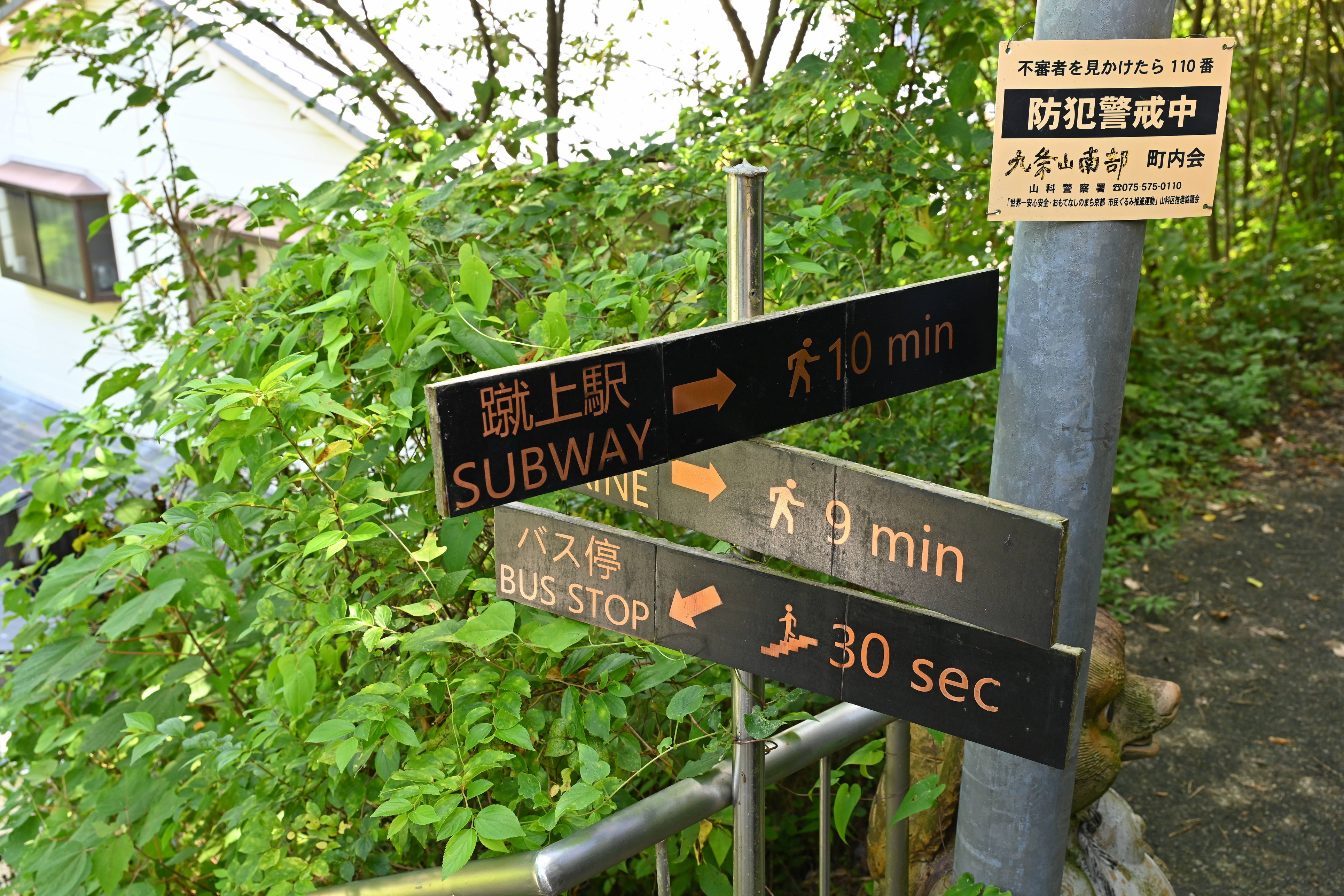
I haven't often seen distances depicted in time on street signs. This one measured in seconds struck me as quite funny! Near Keage Station in Kyoto, Japan.

This place looked pretty crazy with motorcycles and random stuff hanging all over the place. Apparently this is called Takubo Car Maintenance, 田久保自動車整備, in Kyoto, Japan.

Along old Tokaido Road entering Kyoto is a historical landmark called Mount Kujo Kurumaishi. It has something to do with an old ox route, and there's a monument depicting a cart with goods the animals would pull.

A cool looking lumber yard partially enclosed in a very tall barn structure, at the edge of Kyoto, Japan.

A cool looking lumber yard partially enclosed in a very tall barn structure, at the edge of Kyoto, Japan.
I really thought the diagram on this post was telling us to follow the trail around the canal to the other side. Apparently not.

We had a little confusion about how to actually get onto the Lake Biwa Canal path. We ended up going around to the north side and hit a dead end and then had to backtrack.

We had a little confusion about how to actually get onto the Lake Biwa Canal path. We ended up going around to the north side and hit a dead end and then had to backtrack.

Apparently the Lake Biwa Canal was built to make up for a decrease in industry in Kyoto after the capital of Japan was moved to Tokyo. Sights along the Lake Biwa Canal between Kyoto and Otsu, Japan.

A familiar sight, Amazon deliveries. Sights along the Lake Biwa Canal between Kyoto and Otsu, Japan.
Yōkō-ji
Our first little detour off the Lake Biwa Canal trail was to a Buddhist temple called Yōkō-ji. It was very quiet, with a large graveyard and a cool dragon sculpture diving into the ground.
Honkoku-ji
Our second stop along the Lake Biwa Canal trail was to a Buddhist temple called Honkoku-ji, accessible by crossing the Seichaku Bridge. This is the temple of the golden dragon. There is a larger and more well known temple by the same name in Kamakura, but this one is very small. Apparently there used to be much more gold around this place about 10 years ago, but they’ve made some changes toward modesty.

Another nice shop with an honor system for payment, at Honkoku-ji temple along the Lake Biwa Canal trail in Japan.

Something about praying for good feet for the children, at Honkoku-ji temple along the Lake Biwa Canal trail in Japan.

Very old Kamatsu tractor model PC15 at a Buddhist temple called Honkoku-ji off the Lake Biwa Canal in Kyoto, Japan.
We continued on along the canal.

I can understand not kicking or hitting the wild animals with sticks. But not taking photos, either?! At least I can take a photo of this sign. As seen along the Lake Biwa Canal trail between Kyoto and Otsu, Japan.
Attempt to visit Bishamondō temple
We took a detour north up a hill to visit Bishamondō Temple, but it didn’t work out.
The grounds are apparently pretty large and contain some nice gardens, but the complex closed at 16:30 and we got there at 17:08. We just headed back down to continue to Lake Biwa instead. Can’t do everything!

We diverted north from the Lake Biwa Canal trail between Kyoto and Otsu, Japan, to check out Buddhist temple Bishamondō. It apparently is pretty big and was closed by the time we got there at 17:08 (closed at 16:30), so we just headed back down to Lake Biwa instead. Can't do everything!
Lake Biwa Canal path through Otsu


This reminded me of some of the intersections on the hills in San Francisco. This is near Chadomachi in Otsu, Shiga, Japan.

Walking along the canal in Fujiookumachi in Otsu, Japan, we found another honor system store of sorts, where you could buy little plants. They even provide plastic bags to carry it. Japan is adorable.

A single family home residential car elevator. Sights along the Lake Biwa Canal trail between Kyoto and Otsu, Japan.

Around the Kozeki Pass, we got off the Lake Biwa Canal trail and ended up on the main road, which we walked down through Otsu to the lake.

A cute little old timey looking vehicle next to a mail box fashioned out of an old gas can next to a nice house in Otsu, Japan.

One of our first glimpses of Lake Biwa as we walked down a road between Nagara Park and Kamisakaemachi Station in Otsu, Japan.

Kind of funny, a railing made of concrete coated steel made to look like wood. As seen along a road overlooking Lake Biwa, between Nagara Park and Kamisakaemachi Station in Otsu, Japan.

Sights along a road overlooking Lake Biwa, between Nagara Park and Kamisakaemachi Station in Otsu, Japan.

We stumbled upon a very small train station called Kamisakaemachi Station in Otsu, Japan. There was a ticket machine and an honor system.

We stumbled upon a very small train station called Kamisakaemachi Station in Otsu, Japan. There was a ticket machine and an honor system.
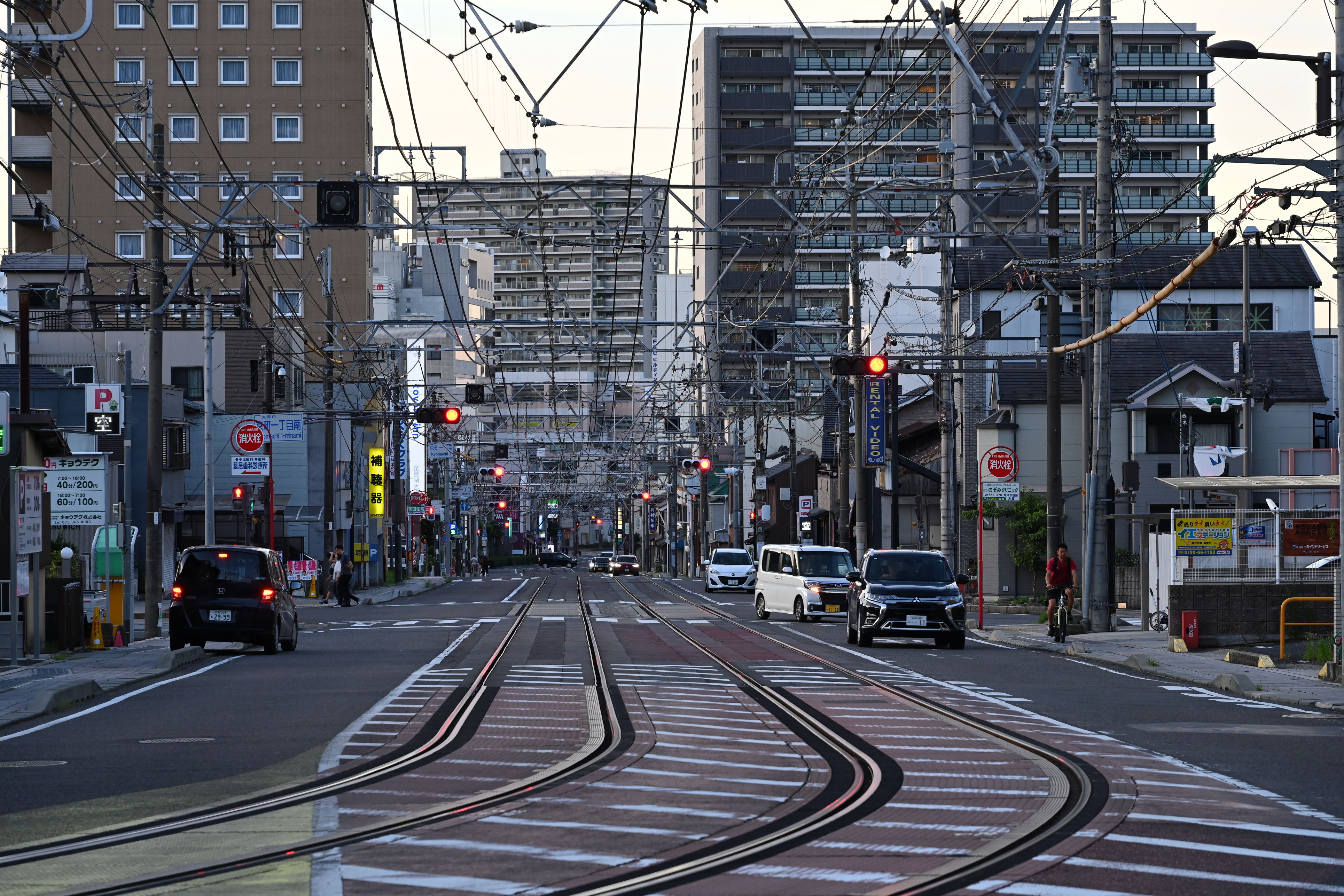
We stumbled upon a very small train station called Kamisakaemachi Station in Otsu, Japan. There was a ticket machine and an honor system.

We stumbled upon a very small train station called Kamisakaemachi Station in Otsu, Japan. There was a ticket machine and an honor system.


I'd never seen a warm meal food vending machine. Chakib says they don't taste that good. And I guess by Japanese standards this is kind of expensive, but still, impressive!
Lake Biwa, Otsu Marina
At long last, after about 8.5 miles walking in the very hot and humid weather, we made it to Lake Biwa just as it was getting dark. We ended up at a mostly concrete marina area, so it wasn’t exactly a scenic beach, but the colors were still nice. The lake is famous in Japanese mythology, so it was good to see it in person.


I made a little video of these silly ducks and put it on YouTube:
There were some angry ‘Chinese geese’ begging for food through the bars of this railing at the Otsu Port Marina on Lake Biwa in Shiga Prefecture, Japan, on July 28, 2024.
Heading back for food
We were hoping to eat near the lake, but it had gotten later than we expected, and not a lot was open. We decided to go back to Kyoto by train and eat there before getting our bags from the hotel. Then Patton and I would take a train to Osaka to check into the new hotel there, and Chakib would go to his planned place in Kyoto for the night. First Chakib had to call his hostel to find out if he could even check in since he would get there after 21:00 or whatever their check in cutoff was. We had to use a pay phone because his phone couldn’t call a local number using his pocket Wi-Fi. I offered my phone, which can make international calls but would have a U.S. number. Chakib decided the pay phone would be the most reliable bet, once we figured out how to use it.

Chakib used a pay phone to make a local call to his accommodations for the night to ask about late check in. Yes, a pay phone.
They told him it’d be fine, and we were off to Kyoto. Only when we got to the Otsu Station, Patton realized he left his shade umbrella somewhere, possibly by the payphone. He decided to run back and get it while Chakib and I waited at the grocery store. He found it, so that was cool!
We then took the train back to Kyoto Station and were excited to dine at a sushi train restaurant that would close in about an hour. Only, once we got there, it turned out they closed an hour earlier than their Google Maps listing claimed. What the heck is up with this problem in Japan?! It’s the fourth or fifth time this happened.

Once we got back to Kyoto Station, the sushi place we hoped to go to was already closed at 21:08 despite their Google listing claiming to be open till 22:00.
Surprisingly — since he didn’t want to eat there the night before — Chakib suggested we just go dine at Nakau, a fast casual place you order from a ticket vending machine. I thought it was pretty good, especially for the price.
Then we said goodbye to Chakib as he took his bus, and Patton and I ran back to our hotel to grab the bags before we got on a train to Osaka. It was funny the bags were still sitting where we left the in the lobby for the entire afternoon from 13:00 to 22:00. I thought they’d put them away in a closet or something, but no. It worked out though.
We got to the new hotel in Osaka a bit before midnight. We were both tired, and a bit annoyed, and my feet hurt. We had a small dispute over taking the train and walking more versus taking an Uber. I offered to carry the bags up the stairs, and we took transit. Maybe it took a bit longer, but at least we could sleep now.
Next up: Touring Osaka Castle, Umeda Sky Building, Osaka gay bars.
Entries in this series
- Japan reunions, hedgehogs, my first capsule hotel (July 22-24)
- Kyoto: Gion festival and a hillside run (July 24-25)
- Exploring Tenjin Matsuri in Osaka (July 25)
- View from Daihikaku Senkōji Temple, and Arashiyama Bamboo Grove (July 26)
- Deers of Nara, then Uji and Fushimi Inari (July 27)
- A walk from Kyoto to Lake Biwa (July 28)
- Touring Osaka Castle, Umeda Sky Building, Osaka gay bars (July 29)
- Running around Osaka, Kobe, leaving Japan (July 30-31)
- Another delightful but very short Japan excursion (August 14)














